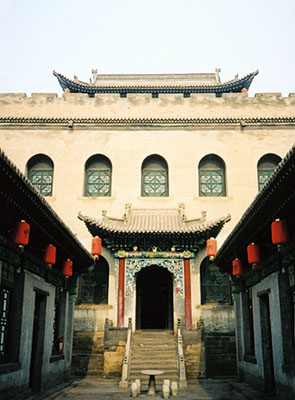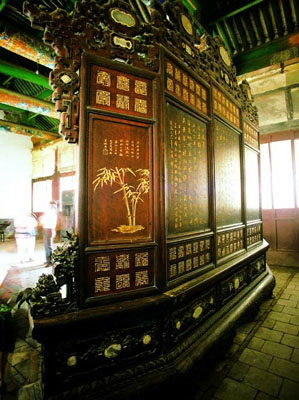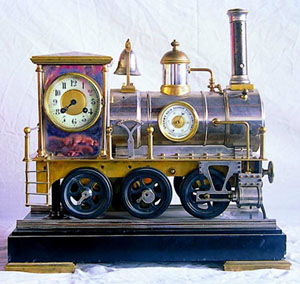 Cao Family Grand Courtyard
Cao Family Grand Courtyard
 Cao Sanxi, part of the 14th generation of the Cao family, started the resplendent history of this family.
Cao Sanxi, part of the 14th generation of the Cao family, started the resplendent history of this family.
During the time of emperors Dao Guang and Xian Feng in the Qing Dynasty, Cao family's business reached the top. They had more than 640 stores, 37,000 employees, and a property value of as high as 12 million pieces of silver.
The Cao family business spread to Japan, Moscow (Russia), Paris (France), and London (the United Kingdom). They even explored a "tea road" (between Shanxi and Mongolia), which can compare in beauty with the "Silk Road."
During the heyday, the Cao family built up one batch of huge and splendid buildings after another in Beiguang Village -- Wugui Tang, Huaiyi Tang, Fushan Tang, Sanduo Tang, and so on.
 Sanduo Tang was one of the representatives and was laid out in the form of the Chinese character '寿' (meaning "longevity"). (Sanduo means duofu (luckier), duoshou (longevity), and duozi (more sons).) This mansion included three grand yards, 15 small yards, and 277 rooms.
Sanduo Tang was one of the representatives and was laid out in the form of the Chinese character '寿' (meaning "longevity"). (Sanduo means duofu (luckier), duoshou (longevity), and duozi (more sons).) This mansion included three grand yards, 15 small yards, and 277 rooms.
Many exquisite woodcarvings, stone carvings, and paintings decorated the entire building, while a Chinese-stylepavilionconnected the entire courtyard.
On the top of the building there are three pavilion-style buildings, which separately looks like the head of a cow, sheep, and pig.
 Presently, the Cao Family Grand Courtyard is open to the public. With thousands of old crafts, paintings, and photos combined with excellent modern lighting and sound effects, it reflects a general picture of the Cao family's glorious history.
Presently, the Cao Family Grand Courtyard is open to the public. With thousands of old crafts, paintings, and photos combined with excellent modern lighting and sound effects, it reflects a general picture of the Cao family's glorious history.
More than 400 pieces of furniture from the Ming and Qing periods, including a folding screen that was enchased with 92 rare natural marbles and carved with 100 of the Chinese character shou (longevity), are also displayed.
The courtyard has also displayed nearly 2,000 pieces ofporcelainand an innumerable amount of jewelry, with each piece being invaluable.